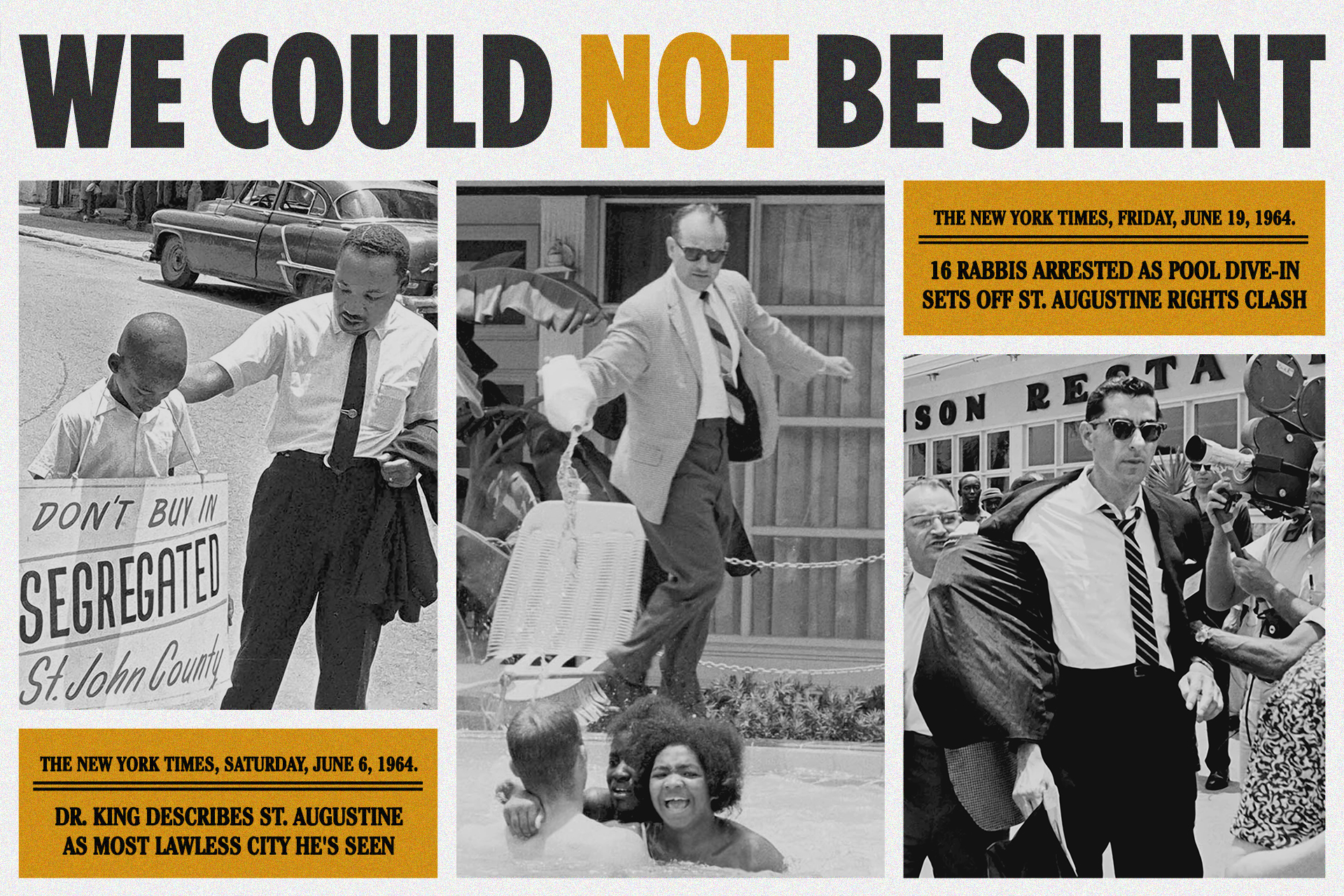OPEN GALLERY DAY | JUNE 2, 12-3pm
Join us Sunday, June 2, 12-3pm, as we mark the 60th Anniversary of the events of June 1964 portrayed in our exhibit, We Could Not Be Silent.
Visitors can tour the exhibit and view the Holocaust Memorial. Our previous exhibit, Art in the Holocaust, will be set up in the Chartrand Tolerance Education Center, and members of our Speakers Bureau will be on hand to answer questions and speak with guests.
In a time when hate groups are on the rise in our nation, honoring this milestone holds profound significance. We hope you’ll join us!
CURRENTLY IN THE GALLERY
Commemorating a remarkable act of solidarity at a critical moment in civil rights history, when a group of rabbis were jailed while supporting Dr. Martin Luther King, Jr. and local Black activists working to desegregate St. Augustine.

SPECIAL EVENT
THURSDAY, MAY 2 | 5:30-7:30pm
Black & Jewish Solidarity During the Civil Rights Movement
A Conversation with Avi Dresner & Dr. Kimberly Allen
Avi Dresner, son of Rabbi Israel S. Dresner (known as “the most arrested rabbi in America” during the civil rights movement), will discuss his father’s legacy with Dr. Kimberly Allen, CEO of 904WARD, whose mission is to create “racial healing and equity through deep conversations and learning, trusting relationships, and collective action.”
The Frisch Family Holocaust Memorial Gallery
Commemorating both unfathomable loss and the indomitable will to survive, The Frisch Family Holocaust Memorial Gallery is the first space of its kind between Atlanta and Central Florida.
The memorial contains a two-panel granite installation designed by Holocaust survivor Morris Bendit to remember those Jews who perished. It consists of an etched mural which depicts a map and information about the human and geographic scope of the genocide.
The gallery features exhibitions, public programs and educational tours exploring themes of human rights, individual courage, and the search for peace. The changing art on the walls serves as a platform for reflection and conversation, and the entire space is dedicated to the power of art: as a tool for remembering and as a channel for speaking truth, building understanding, and telling stories that need to be told.
THE GALLERY IS OPEN TO THE PUBLIC
Monday – Friday | 8:30am – 5:00pm
Visit our Holocaust Education page to find out more about scheduling tours for student groups.
“My vision for creating a Holocaust Memorial comes from the love and dedication I feel for the six million Jewish victims of the Holocaust who have no resting place. A monument made from stone symbolizes the strength we have as a community to never forget them and to teach our future generations how important our history is. We must never forget.”
~ Morris Bendit

